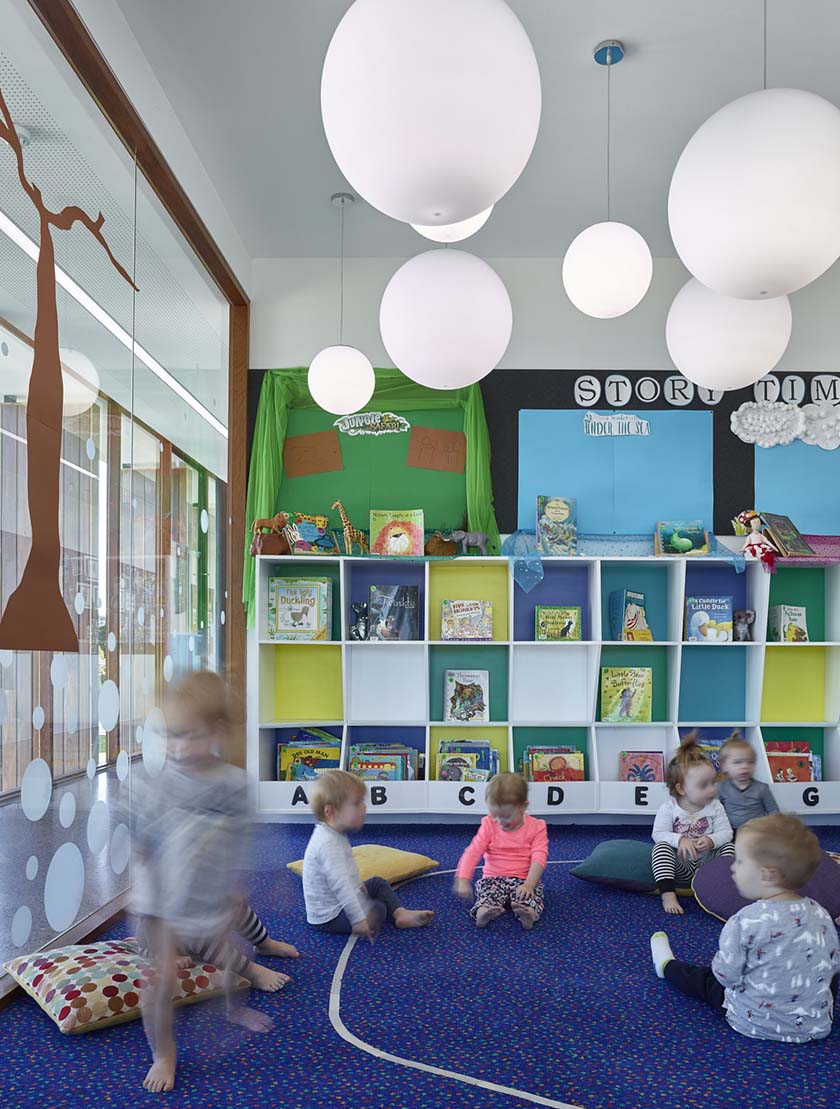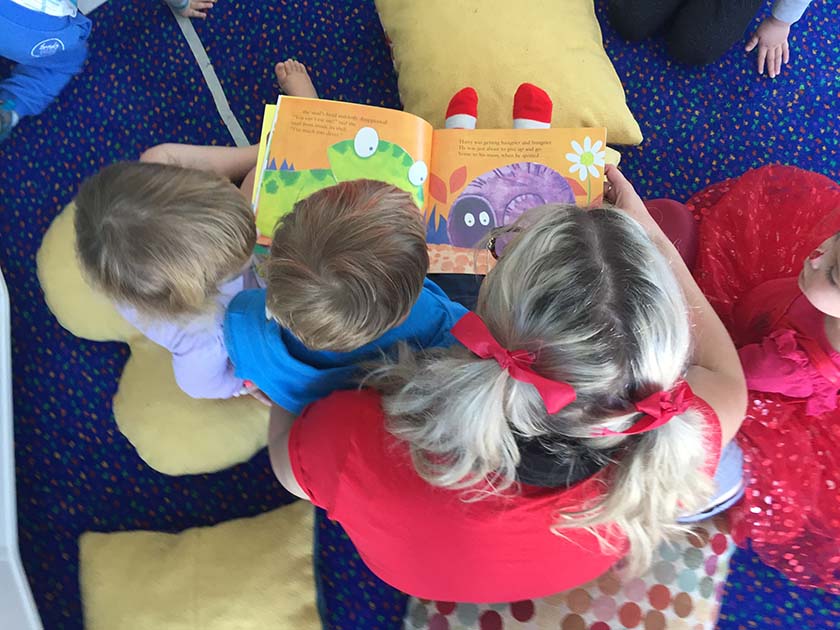Events , Parenting
|August 13, 2017| 5mins
Written by Jana Walker | Timber Tots Child Care
Twas the night before Christmas, when all thro’ the house not a creature was stirring, not even a mouse. The stockings were hung by the chimney with care, in hopes that St. Nicholas soon would be there….
A favourite memory, sitting with my dad and listening to him tell the story of ‘The Night Before Christmas’ without even opening the book. How did he do that? How did he know the story without even opening the book?
As a five-year old I thought it was the best magic trick ever, and I wanted him to do it over and over. Now when I read a well-loved book to my children, especially ‘The Night Before Christmas’, I want to share my magical skills by telling the story aloud before I open the book and read it to them. Imagine if my Dad knew back then how much that moment was going to impact not only my love for reading but also his grandchildren’s. In fact, my love of reading resulted in a purpose-built Library with a full-time librarian in our Child Care Centre, hoping to inspire hundreds of children to build on their love of stories and reading in their early years.

So much research points to the importance of reading aloud to your children in their early years and the positive impacts it will play on their language and literacy development. However, currently our primary school children are some of the worst performing internationally in literacy[1] and almost half of the Australian adult population still does not have the minimum standards of literacy to meet the demands of everyday life and work[2]. This is a major reason for concern. However, experts also point out that by reading aloud 1000 books a year to your child you can dramatically affect their lives in a positive way.
At first thought 1000 books may seem like an impossible target, especially in our hectic and fast paced lifestyles. But if every family could read aloud a minimum of three books everyday, this would mean each child has the potential to listen to over 1000 books in a year. When broken down, 1000 books can be done easily!
Reading aloud to your child shouldn’t be a chore of “I have to do this”, but rather seen as a magical moment to connect with your child. It should be seen as remedial therapy. A chance to close off the world and the problems of your day. To relax and spend time immersed in the land of imagination with your child. It may only be 15 minutes, but that time can allow your child to hear rhythm, rhyme, repetition, and patterns in words. Reading aloud allows discussions around the stories, words, pictures and to scaffold old with new knowledge, and helping them express themselves more easily and clearly. Before long, these moments together help children begin to understand the look and purpose of print, the way words work in sentences and the way the world works – why this happens and that happens – and how it all comes together to mean something. In other words, they begin to learn to read.

Reading is not something already programmed in children’s brains. Human brains are naturally wired to speak, not read and write[3]. The act of learning to read and become literate has become an important aspect of early education within our modern, industrialized and technological societies[4]. However, it is crucial for us to understand that reading aloud to children isn’t a matter of teaching a child the rules of reading, but to enrich them through the experience. Mem Fox believes that creating the “fire” for reading isn’t achieved alone by the book, nor by the child, nor by the adult who is reading – it’s the relationship winding amongst all three that bring them together[5]. When a parent and child read together, not only is language and cognitive development supported, but also the emotional development of the child. This is important to a child’s readiness for school[6]. The simple act of reading aloud to children has been referred to as “the single-most important thing adults can do to promote the emergent literacy skills of young children”[7].
Reading aloud to children is not just an activity to be done at home. The Early Years Framework (the Framework) that underpins the curriculum for Educators, understands the importance of literacy and reading aloud to children. It states that the foundations that are essential for children to be successful learners and competent in literacy can be built in an early childhood setting[8]. The Frameworks Outcome Five has two indicators that specifically focus on the importance of literacy. Educators within the early childhood setting play a crucial role in influencing the positive development of language and literacy in very young children. In an environment where educators are supportive, positive and offer plentiful verbal stimulation and read aloud opportunities, children are likely to show advanced cognitive, language and literacy development[9]. The quality relationships Educators have with children provide them with another context to embed the love of literacy as they have multiple opportunities to read stories throughout the day through forms of transitions, quiet play, small groups and whole class sessions and individual reading moments.
By working together, parents and Educators can make a vital improvement on a child’s early learning experiences which can have a profound impact on their brain development and subsequently on their development in literacy skills[10]. By offering children a variety of opportunities to listen to stories being read and being immersed in rich language from the time they wake until bedtime, each child has the opportunity to listen to more than three books each day and develop their love for reading and improve their literacy skills.

[1] PIRLS (2011) International Results in Reading. Retrieved from https://timssandpirls.bc.edu/pirls2011/index.html
[2] Australian Bureau of Statistics (2006). Adult literacy and life skills surveys. Canberra: Australian Bureau of Statistics.
[3] Murdoch Childrens Research Institute (2013). 2013 Let’s Read Literature Review: Center for community Child Health, 6-7.
[4] Finegan, E., Besnier, N., Blair, D., & Collins, P. (1992). Language: Its Structure and Usage, Australian Edition. New York: Harcourt Brace Jovanovich.
[5] Fox, M (2001) Reading Magic: How your child can learn to read before school – and other read aloud miracles, 26.
[6] Justice, L & Pullen, P (2003). Promising interventions for promoting emergent skills: Three evidence-based approaches. Topics in Early Childhood Special Education, 23 (3), 99-114
[7] Lonigan, C., Allen, N., J.L., Phillips, B.M., Purpura, D.J., Wilson, S. B., McQueen, J. D. (2009) The nature of preschool phonological processing abilities and their relationships to vocabulary, general cognitive abilities, and print knowledge. Journal of Educationa Psychology, 101 (2), 345-385.
[8] Council of Australian Governments (2009). Belonging, Being and Becoming: The early years learning framework for Australia, 38-44.
[9] Murdoch Childrens Research Institute (2013). 2013 Let’s Read Literature Review: Center for community Child Health, 30-31.
[10] Kupcha-Szrom, J. (2011). Early language and literacy development, Zero to three. Retrieved from www.zerotothree.org
